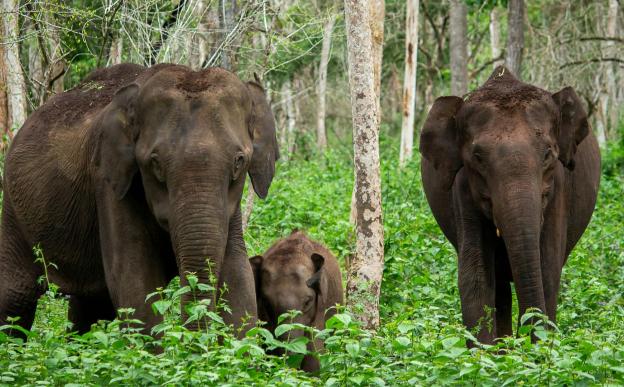![Savanna grasslands of Africa. [Image Credits: Calle v H / CC BY 2.0 via Wikimedia Commons] A new mathematical model explains how seed dispersal maintain savanna and forest biomes](/sites/researchmatters/files/styles/large_800w_scale/public/suma11.jpg?itok=cNY-08_P)
Savanna grasslands of Africa. [Image Credits: Calle v H / CC BY 2.0 via Wikimedia Commons]
The savannas are tropical landscapes characterised by trees and grass, serving as home to some iconic mammals such as zebras and elephants. Majorly distributed across Africa, savannas are also seen in Asia, Australia and the Americas, covering nearly a fifth of the planet. They are often found close to forests, marked by a unique savanna–forest transition zone.
“On one side, we have a forest with no grass. On the savanna side, there is a continuous layer of flammable grass, with sporadically distributed trees,” explains Nikunj Goel, a researcher at the University of Texas at Austin, USA.
His research involves understanding the ecological processes in such transition zones. But how does nature maintain this boundary between the savanna and the adjoining forests? What effect would climate change have in such fragile zones?
In a recent study, Nikunj, along with researchers from the Indian Institute of Science, Bengaluru, Yale University, USA, and Princeton University, USA, used mathematical models and satellite data to understand how seed dispersal from forest trees helps in maintaining the savanna–forest boundaries. The study was published in the journal The American Naturalist.
Ecologists have developed many theories explaining how biomes — large communities of plants and animals that have adapted to a certain climate are distributed. The classical ‘biome theory’ says that the prevailing climatic conditions determine the distribution of plants, and the biomes track changes in the climate which are reversible. The ‘bistable theory’, on the other hand, argues that a single climatic type can support both savannas and forests, which are maintained by the occurrence of natural fires, consistent with satellite observations. However, the bistable theory cannot explain why savanna and forest are spatially clustered.
In the current study, the researchers resorted to mathematics to address the shortcomings of the bistable theory.
“We developed a mathematical model to describe changes in tree populations when many patches are connected together by dispersal,” says Nikunj.
They considered how plants spread by seed diffusion and assumed that processes like fire and rain determine the vegetation structure. They incorporated two variables; one to explain the interactions between fire, vegetation, and the climate, and another for seed dispersal. A mathematical function in their model measured the death of the vegetation, particularly trees, caused by natural fires.
The researchers carried out simulations that show how forests expand into savannas until the growth rate of trees is reduced due to a decrease in rainfall. Similarly, the wind disperses seeds into the forest, causing the savannas to expand into the woods. However, when there is an increase in the rainfall, the trees grow back, restoring the boundary. The boundary is thus maintained until the forests or the savannas become too small to track changes in the climate and support dispersal.
The study also reveals how climate change could influence changes in savannas and forests, and that such changes may be reversible due to the role of seed dispersal. Thus, these ecosystems could be more resilient to natural and human-induced disturbances. However, such reversible shifts may be extremely slow, and if the disturbances are large enough, these ecosystems may fail to recover, caution the authors.
While the findings shed light in how interactions between factors such as rainfall, fire and dispersal help maintain tropical savannas, other questions remain open. The savannas are home to many large herbivores that feed on the plants that grow here. However, their role in maintaining the savanna–forest boundary remains unexplored.
“Herbivory could play a role but there aren’t any good datasets to show that continental-scale savannas–forest boundaries are determined by herbivory,” says Nikunj. “We think, at such a large spatial scale, the climate, fire, and dispersal play a dominant role in structuring plant distributions.”
Editor's note: There were some minor edits to the content. The error is regretted.






